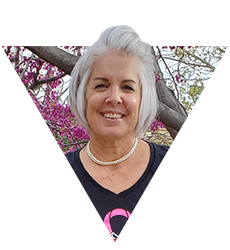An accident in her teens led Theresa to make a difficult decision much later in life — an above-the-knee amputation in her 50s. It was a decision she would not regret.
Theresa nearly lost her leg many years earlier. In 1980, at 16, she was in a car accident that resulted in a serious injury, crushing her left leg. At the time, her doctors made the decision to save her leg, knowing it would be risky. Hospitalized for 80 days and undergoing 12 surgeries, Theresa’s surgical team was successful in reattaching her leg. Her surgeries included fusing her femur (thighbone) to her tibia (lower leg bone) due to a staph infection in her knee joint; skin grafts to close the large open wounds; and a latisimus dorsi muscle transfer from her back to her lower leg to pad and protect her popliteal artery (a major artery behind the knee). Yet another surgery involved grafting nerves harvested from her right leg to her left leg with hopes that she would eventually regain some feeling in her foot.









